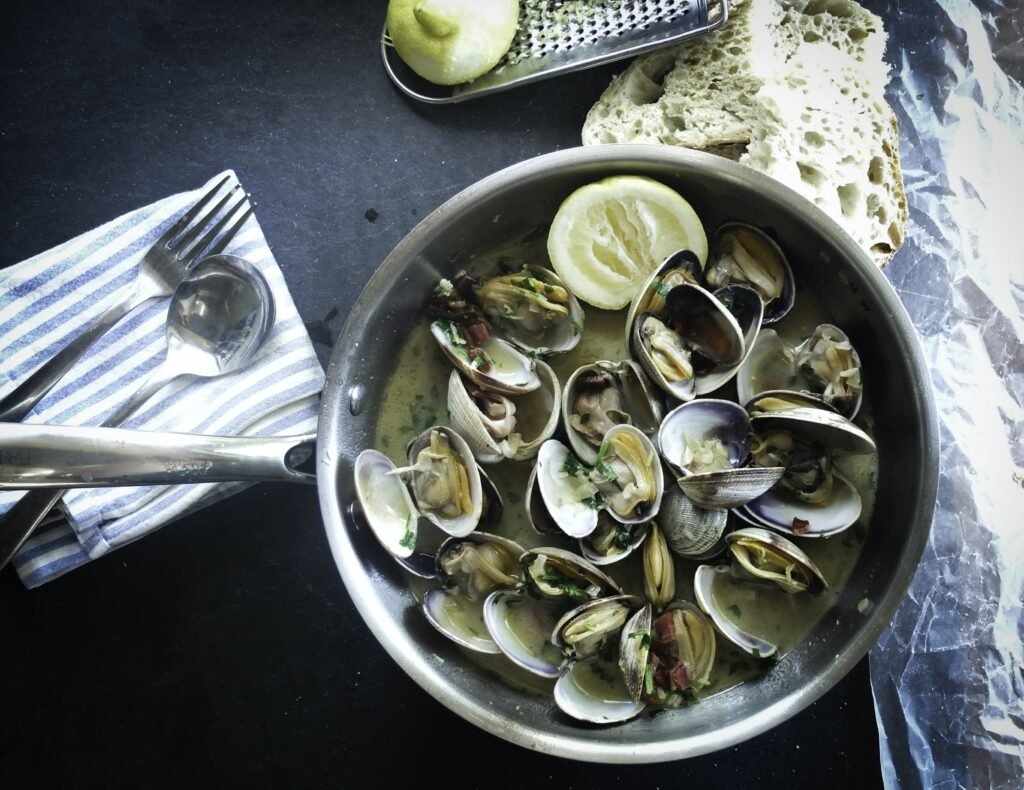

Have you ever wondered how to keep your food fresh and safe while camping in Australia? With the diverse wildlife and extreme weather conditions, it is crucial to take the necessary precautions to ensure the conservation of your food and avoid any potential health risks. In this article, we will explore a few simple yet effective strategies that will help you store your food safely during your camping adventures down under. From proper storage containers to smart meal planning, we’ve got you covered. So, let’s dive in and learn how to keep your food fresh during your unforgettable camping experience in Australia.
Choosing the Right Food Storage Containers
When it comes to storing food while camping, choosing the right food storage containers is crucial. Consider the material of the containers you plan to use. Opt for BPA-free plastic containers or stainless steel ones, as they are durable and lightweight. Glass containers can also be a good option, but be mindful of their weight if you’re backpacking.
In addition to the material, look for airtight containers. This will help keep your food fresh and prevent any unwanted odors from spreading. Airtight containers also keep insects and other critters out of your food, ensuring that it stays safe to consume throughout your camping trip.
Lastly, choose containers with secure lids. This will ensure that your food doesn’t spill or leak, which can be a messy and wasteful experience. Make sure the lids fit tightly and are easy to seal properly.
Keeping Food at Safe Temperatures
Maintaining proper temperatures for your food is essential to prevent bacteria growth and foodborne illnesses. Pack a cooler with ice or ice packs to keep perishable items cold. Ensure that the cooler is well insulated and keeps a consistent temperature throughout your trip.
When organizing food in the cooler, separate raw and cooked foods. Raw meat, poultry, and seafood should always be stored separately to avoid cross-contamination. Place raw meats on the bottom of the cooler to prevent any dripping onto other food items.
Monitor and control the temperature of your cooler by regularly checking the ice or ice packs. If necessary, add more ice to keep the temperature at a safe level. Avoid opening the cooler frequently to maintain a consistent and cool environment for your food.


Preventing Cross-Contamination
Cross-contamination is a significant concern when storing food while camping. To prevent cross-contamination, always keep raw and cooked foods separate. Use separate containers, bags, or wraps for raw meats and cooked foods to ensure that bacteria from raw meats do not come into contact with ready-to-eat foods.
It’s also essential to keep food away from animals or insects. Store your food in secure containers and elevated off the ground to deter wildlife from accessing it. Be cautious of crumbs or food remnants that may attract animals or insects to your campsite.
To further minimize cross-contamination risks, use different cutting boards and utensils for raw and cooked foods. This will prevent bacteria from transferring from raw meats to cooked foods.
Properly Storing Perishable Foods
Perishable foods require extra attention to maintain their quality and prevent spoilage. Use freezing to your advantage by freezing food items ahead of your camping trip. This will not only extend their shelf life but also act as additional cooling in your cooler.
For long trips, consider packing dry ice along with your perishable foods. Dry ice produces extremely cold temperatures and can help keep your food frozen for an extended period. Be sure to handle dry ice with care and follow safety guidelines.
When it comes time to thaw frozen foods, ensure proper thawing to maintain both taste and safety. Thaw frozen foods in the refrigerator or submerged in cold water, changing the water every 30 minutes. Avoid thawing at room temperature as it promotes bacterial growth.


Minimizing Waste and Spoilage
To make the most out of your camping food supply, it’s essential to minimize waste and spoilage. Plan your meals and portions in advance to avoid overpacking or wasting excess food. Consider creating a meal plan and a shopping list to ensure that you’re only bringing what you need.
Opting for non-perishable or dehydrated foods can also help minimize waste. Non-perishable items like canned goods, granola bars, and dried fruits are not as prone to spoilage and can be stored for longer periods.
When you have leftovers, make sure to keep them cool and safe. Store them in airtight containers and place them in the cooler as soon as possible. Leftovers should be consumed within a reasonable timeframe to prevent any foodborne illnesses.
Maintaining Cleanliness at the Campsite
Proper cleanliness at the campsite is essential for food safety. Wash your hands thoroughly with soap and water before handling any food or cooking equipment. Use hand sanitizers as an alternative if water is not readily available.
Clean utensils and surfaces regularly to prevent cross-contamination. Use biodegradable soap and warm water to clean pots, pans, dishes, and any other cooking utensils. Disinfect cutting boards, knives, and other food preparation tools with a sanitizing solution or by boiling them in water.
Dispose of waste properly to maintain cleanliness and prevent attracting animals. Use designated trash bags or bins and make sure they are securely tied. Keep food scraps and waste away from your campsite to avoid unwanted animal visitors.


Considering Food Safety Guidelines
It’s crucial to follow food safety guidelines while camping to ensure the health and safety of yourself and others. Adhere to the 2-hour rule, which states that perishable food should not be left at room temperature for more than two hours. If the outside temperature is above 90°F (32°C), the time reduces to one hour.
Understand the danger zone, which is the temperature range where bacteria grow most rapidly. Keep hot foods hot (above 140°F or 60°C) and cold foods cold (below 40°F or 4°C) to prevent bacterial growth.
Be aware of common foodborne illnesses in the area you are camping. Different regions may have specific risks, such as food poisoning from fish in coastal areas. Stay informed about any local alerts or advisories regarding food safety.
Storing Food in the Wild
If you are camping in an area with wildlife, it is crucial to store your food properly to avoid attracting animals. Hang your food in a bear bag or bear-resistant container to keep it out of reach. Find a sturdy branch away from your campsite and make sure the bag is at least 10 feet off the ground and 4 feet away from the trunk.
In bear country, use bear canisters specifically designed to keep food safe from bears. These canisters are sturdy and bear-proof, ensuring that your food remains secure throughout your camping trip.
Store your food in sealed containers to prevent animals from smelling it. Airtight containers or resealable bags can help keep food odors contained and deter animals from approaching your campsite.


Dealing with Limited Refrigeration
In situations where refrigeration is limited, it’s important to prioritize perishable foods. Consume perishable items first to minimize the risk of spoilage and foodborne illnesses. Be strategic with your meal planning to ensure perishables are consumed within the appropriate timeframe.
Use insulated bags or coolers to extend the shelf life of your perishable items. These can help maintain the temperature of your food for a longer period, even without access to a refrigerator.
Consider utilizing ice packs or frozen water bottles in your insulated bags or coolers to keep them cold for a more extended period. As the ice melts, it will help maintain the low temperature necessary for food safety.
Emergency Backup Plans
Preparing for emergencies is always a wise decision when camping. Have a backup cooler on hand in case your primary cooler malfunctions or is not sufficient to store all your food.
Consider including non-perishable meal replacement options in your camping supplies. These can come in handy in unexpected situations where fresh food is not available or where perishable items have spoiled.
Knowing local emergency food sources can be crucial in case of any unforeseen circumstances. Familiarize yourself with nearby stores, markets, or restaurants where you can purchase or obtain food if needed.
By following these tips and guidelines, you can ensure that your food is stored safely while camping in Australia. Prioritize food safety, cleanliness, and the well-being of yourself and your camping companions to have an enjoyable and worry-free outdoor adventure.


Leave a Reply